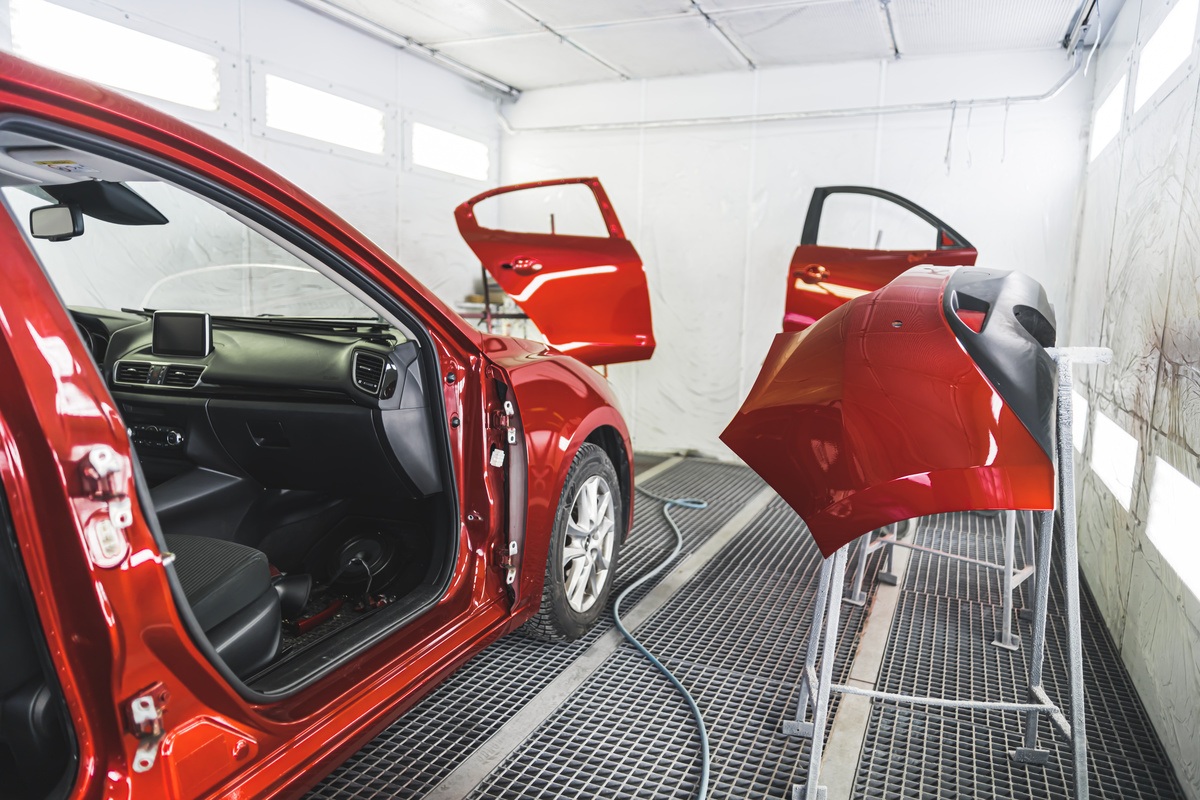Optimize Parts Management for Collision Repairs: How to Reduce Delays of Specialty Parts
-
Written by David McCreight
-
Published on December 18, 2024
-
Category: Strategic Planning
When you provide collision repairs, delays caused by unavailable specialty parts can disrupt operations and harm customer satisfaction. Effective damage assessment, part procurement, and inventory management is essential to prevent these delays, ensuring smoother workflows and faster turnaround times. By implementing strategic practices and leveraging advanced tools such as a CR Visual Production Manager™, repair shops can transform their operations.

Identifying Damage to Specialty Parts in the Collision Repair Process
When a vehicle is involved in a collision, the impact can damage more than just the exterior panels and visible components. Specialty parts such as advanced sensors, custom trim pieces, and structural reinforcements are often at risk, and their damage may not always be immediately apparent. Properly identifying these issues is essential to restoring a vehicle to its original condition and ensuring safety on the road. Here’s a closer look at how to effectively assess damage to specialty parts during the collision repair process.
Understanding Specialty Parts
Specialty parts include a wide range of components, such as:
- Advanced Driver Assistance Systems (ADAS): Sensors, cameras, and radar units that support safety features like adaptive cruise control and lane-keeping assistance.
- Custom and High-End Trim: Unique moldings, badges, or finishes that may be specific to a luxury or performance vehicle.
- Structural Reinforcements: High-strength steel or composite materials designed to absorb impact energy and protect occupants.
- Electric Vehicle (EV) Components: Battery packs, cooling systems, and specialized wiring harnesses.
These parts often require special attention due to their complexity, cost, and critical role in vehicle functionality.
Steps to Identify Damage to Specialty Parts
- Perform a Comprehensive Visual Inspection: Start by examining all areas of the vehicle, not just the apparent point of impact. Pay close attention to components that may have been jarred or displaced by the collision force.
- Leverage Diagnostic Scans: Use pre-repair and post-repair scans to identify any faults in electronic systems. Many modern vehicles rely on onboard diagnostics to alert technicians to issues with ADAS components, sensors, or wiring.
- Consult OEM Repair Procedures: Original Equipment Manufacturer (OEM) repair guides provide detailed instructions for assessing and repairing specialty parts. They may also highlight specific components that need replacement following certain types of impacts.
- Inspect Hidden Damage: Structural reinforcements and EV components are often concealed beneath exterior panels. Use tools like borescopes or disassembly techniques to check for cracks, deformation, or other hidden damage.
- Check for Calibration Needs: ADAS components often require recalibration after a collision to function correctly. Ensure that recalibration steps are included in the repair plan.
- Collaborate with Specialists: In some cases, specialty repairs may require input from experts in specific fields, such as EV systems or ADAS technologies. Partnering with specialists ensures a thorough and accurate repair.
Common Challenges in Identifying Damage
- Subtle or Latent Issues: Damage to electronics or structural components may not be immediately visible.
- Limited Access: Specialty parts may be located in hard-to-reach areas, requiring disassembly or advanced tools for assessment.
- Cost Considerations: Replacing specialty parts can be expensive, which sometimes leads to pressure to opt for repairs over replacements.
- Lack of Training: Technicians must stay updated on the latest technologies and repair methods to identify and address specialty part damage effectively.
The Importance of Thorough Documentation
Accurate documentation of damage and repair steps is crucial for transparency and insurance purposes. Use photos, diagnostic reports, and detailed notes to create a comprehensive record of the repair process.
Track and Analyze Part Usage
Monitoring part usage trends is key to identifying high-demand specialty parts. By analyzing historical data, repair shops can better predict future needs, reducing the chances of stock shortages or overstocking.
Establish a Dedicated Specialty Parts Inventory
Create a separate inventory specifically for high-demand or hard-to-source specialty parts. Organizing these items in a dedicated space improves accessibility and minimizes time spent searching for critical components.
Negotiate Faster Delivery Terms with Suppliers
Build strong relationships with trusted suppliers and negotiate for expedited shipping options. Reliable, fast delivery agreements ensure that specialty parts arrive promptly when needed.
Collaborate with Other Repair Shops
Partner with nearby repair shops to create a parts-sharing network. This collaboration provides access to specialty parts on short notice, helping reduce delays during critical repairs.
Adopt Advanced Technology for Inventory Management
Using specialized production management software, such as Collision Resources' CR Visual Production Manager™, can significantly enhance operations. Key benefits include:
- Real-Time Tracking: Monitor part usage and inventory levels in real time, ensuring critical specialty parts are always on hand.
- Bottleneck Identification: Detect and resolve potential inventory or supply chain issues before they lead to delays.
- Data-Driven Decisions: Utilize detailed analytics to optimize ordering and stocking practices, reducing waste and inefficiencies.
By integrating this tool into their workflow, repair shops can save time, enhance productivity, and improve customer satisfaction.
Specialty parts delays don't have to derail your operations. Contact us today to learn more about out CR Visual Production Manager™ software solution.
Subscribe to Our Newsletter
Interested in receiving more tips delivered directly to your inbox?

David McCreight is the Owner of Collision Resources and serves as President. Ultimately, David is categorically passionate about assisting auto body shop owners and managers to define and exceed their goals.


